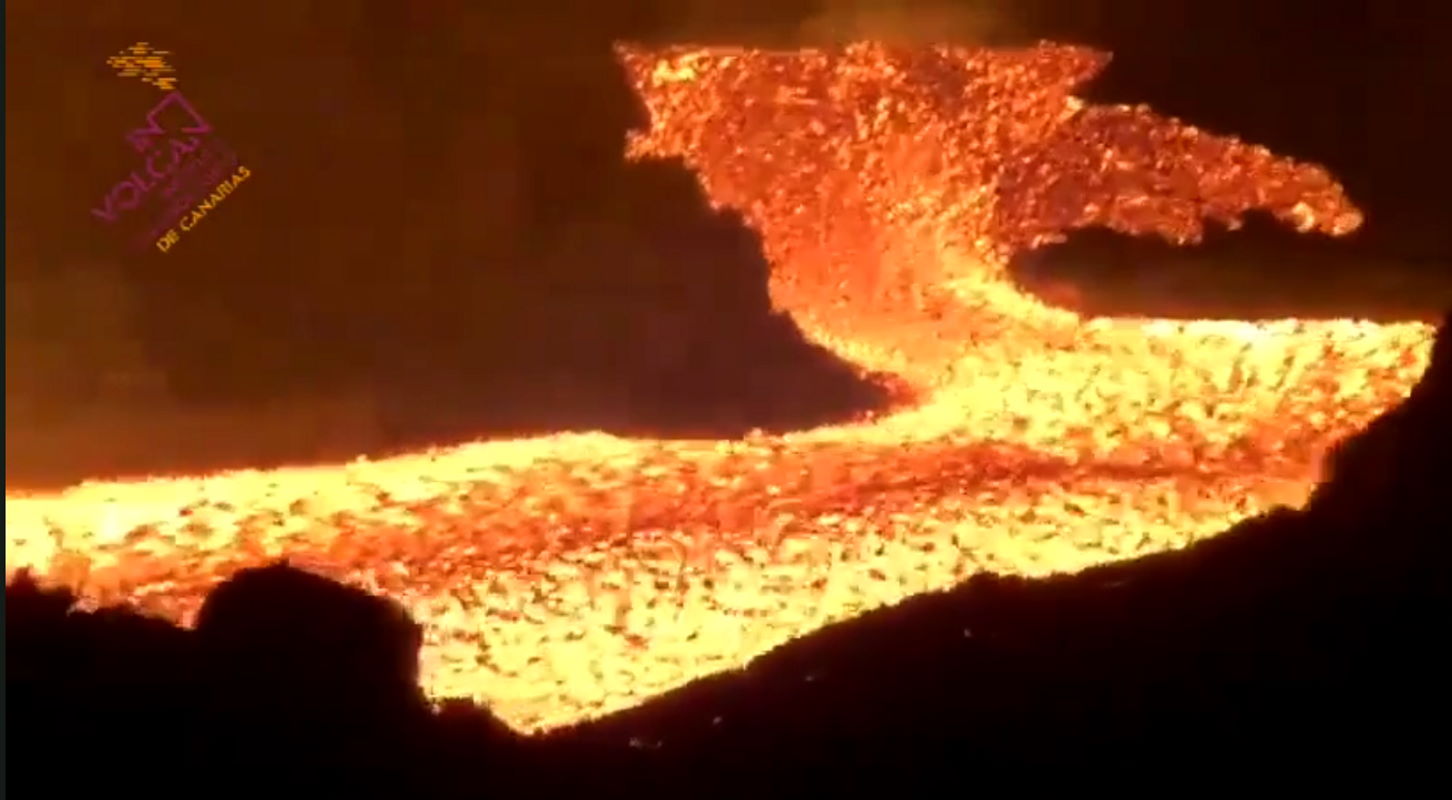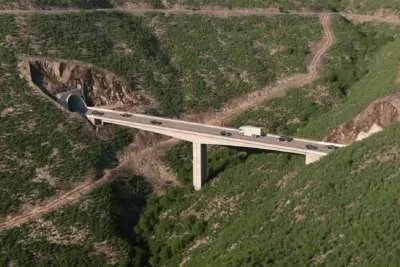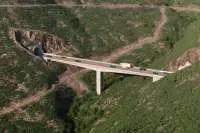VIDEO: River of lava passes through Tacande, La Palma’s children go back to school
- 19-10-2021
- National
- Canarian Weekly
A new explosion of the volcano in La Palma at 8.50pm last night, created a lava river flowing past Tacande captured by Involcan. This lava is flowing down the path created by previous flows making it thicker as it thins out the further down it gets and starts to cool.
According to Involcan, the different lava flows that are advancing down the slope from the Cumbre Vieja volcano have entered a phase of ‘stability and slowness’, including the one that, until now, was more active and is just 160 metres from the sea.
Scientists estimate that due to the flow and speed of this stream, just 2 metres per hour, an imminent arrival at the sea tonight is not foreseeable.
There are now 763.32 hectares affected by lava flows, 20 more than yesterday, of which 228.9 correspond to cultivated areas (128 of banana plantations; 52 of vineyards and 17 of avocados). In addition, there are 1,956 buildings destroyed and 61 more at risk.
Meanwhile, the island is trying, as much as possible, to regain some sort of normality. Yesterday more than 4,500 students and 600 teachers from the Aridane Valley, the most affected municipality, have returned to school, the first time in almost a month.
The most annoying thing for schools, apart from the noise of the volcano, has been the ash. From day one, they have had to apply the poor air quality protocol in all education centres:
- Children have been confined to classrooms.
- Windows and doors have remained shut.
- No break or PE
- They must wear FFP2 masks, protective glasses and caps with visors when leaving class.
The other point of interest yesterday, Monday, was at the La Palma airport, where the airline Binter resumed its operations for a few hours until it was forced to cancel the last four flights that it had scheduled due to the presence of ash on the runway.
Meanwhile, the volcano continues to show no signs of weakness despite a reduction in sulphur dioxide emissions, which were below the threshold of 5,000 tons per day according to yesterday's measurements, far from the 100 tons that it needs to reduce to, to show signs of easing up.
Other articles that may interest you...
Trending
Most Read Articles
Featured Videos
A Vision of Elvis Tenerife Promo
- 10-05-2025
Tenerife Travel Guide
- 13-12-2024
Live webcam from Lanzarote airport
- 13-12-2024





























































